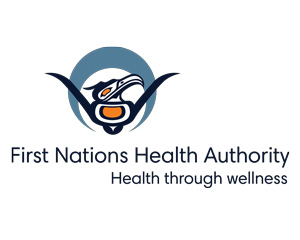A message from Dr. Sean Wachtel, FNHA Medical Officer

Pain is a part of life – we all experience it at some point, and it comes in many forms. There's physical pain, such as after an operation; emotional pain, such as after a relationship breakup; and spiritual pain, such as that experienced by many Indigenous peoples due to the destruction of Indigenous families and culture by colonization and genocide. At the FNHA, we believe in a holistic approach to health that includes the prevention, treatment and management of all forms of pain for all Indigenous peoples in BC. We strive to promote and live out the First Nations Perspective on Health and Wellness passed down from our Elders and traditional healers.
Traditional medicine and approaches before pain-killing drugs
Our goal is health through wellness, that is, to help you stay healthy and well rather than treating illness after the fact. Physical health should always be nurtured by eating well, exercising regularly, and getting enough sleep. A person's resilience to pain, or our pain threshold/tolerance, can also be affected by our social supports, cultural strengths, and spiritual health. Diverse Indigenous cultures and spiritual practices offer wellness approaches aimed at addressing the discrete parts of our being. These approaches include consuming traditional foods, participating in cultural activities, using traditional medicines, acknowledging and treating intergenerational trauma, nurturing intergenerational resilience, and strengthening and taking pride in cultural identity - for example, by joining a drumming circle, learning one's ancestral language or art forms, or participating in community ceremonies. A person who is physically, emotionally, mentally and spiritually healthy often has a higher pain threshold, requires fewer medicines, and recovers more quickly from illness and injury.
There is, however, a time and place for adding pain-killing drugs
That said, we all know there are times when we also need to add pain-killing drugs to our wellness regime. As a physician, I can tell you that contemporary western medical practice is rudimentary and limited when dealing with pain, which is often considered in only the physical sense. Because of this, many physicians deal with patients in pain simply by prescribing drugs.
While drugs do have their place, they must also be treated with respect and caution. We only have to look at the tragic opioid crisis sweeping the country to realize this.
Opioids can be useful drugs if prescribed and taken in the right circumstances, e.g., a brief course for severe short-term (acute) pain or for long-term (chronic) cancer pain, but in the case of chronic non-cancer pain, treatment with opioids is rarely recommended due to the high level of risk involved. Each patient is unique, however, so must be assessed individually. Acute and chronic pain can be interrelated and affect each person individually. In acute settings, such as after an operation or a severe injury like a broken bone, stronger drugs like morphine, hydromorphone or oxycodone can be needed. For conditions such as cancer, stronger opioid drugs are likely to be the most effective, including medical preparations of fentanyl such as patches.
A word on the opioid drug Tramadol™
We have noticed that Tramadol™ (found in Ralivia™, Tridural™, Durela™, Ultram™, Zytram XL™), a drug similar to morphine and fentanyl, but not as safe or effective even when compared to other opioid and non-opioid alternatives – and with all the same side effects as the stronger opioids, including the potential to cause addiction – is being prescribed in situations where either a stronger drug would be justified (for severe pain) or a less-strong drug like ibuprofren (found in Advil™ or Midol™), in combination with Tylenol™, would suffice (for less-severe types of pain). This means that patients, including First Nations individuals in BC, may not only be suffering unnecessary pain but taking unnecessary risks. What's more, Tramadol™ is not covered by health benefits plans as it is new, expensive and less effective than simpler, safer and cheaper drugs such as Advil™ or Tylenol™. While Tramadol™ does have its place (nerve damage-related pain can respond well to it), I would recommend that patients ask about other options.
Work with your health care provider
In my own clinical practice, I try to work with patients as partners to choose a medicine that is right for them. I hope that your health care providers will take a similar approach and discuss with you their recommended painkiller should you need one. I encourage you to read up on the side effects/warnings of your prescriptions and talk to your health care providers – physicians, nurses, pharmacists – about any questions or concerns you may have. Ideally, we are all your partners in your journey to health and wellness.
Again, traditional medicine and approaches before pain-killing drugs
I urge each Indigenous person in BC to partner with your health care providers to choose the best medicine for you, and to strengthen your resilience to pain and illness by embracing the wellness that Indigenous culture, traditional healing and a healthy lifestyle can offer.

